Guide to Tofu and Tempeh
This post covers everything you need to know about tofu including what its made of, its health benefits, how to prepare it, frequently asked questions and the best type of tofu for frying, baking and more. We’ll also discuss tempeh and natto, two other soybean products that make a protein-rich addition to a healthy diet.
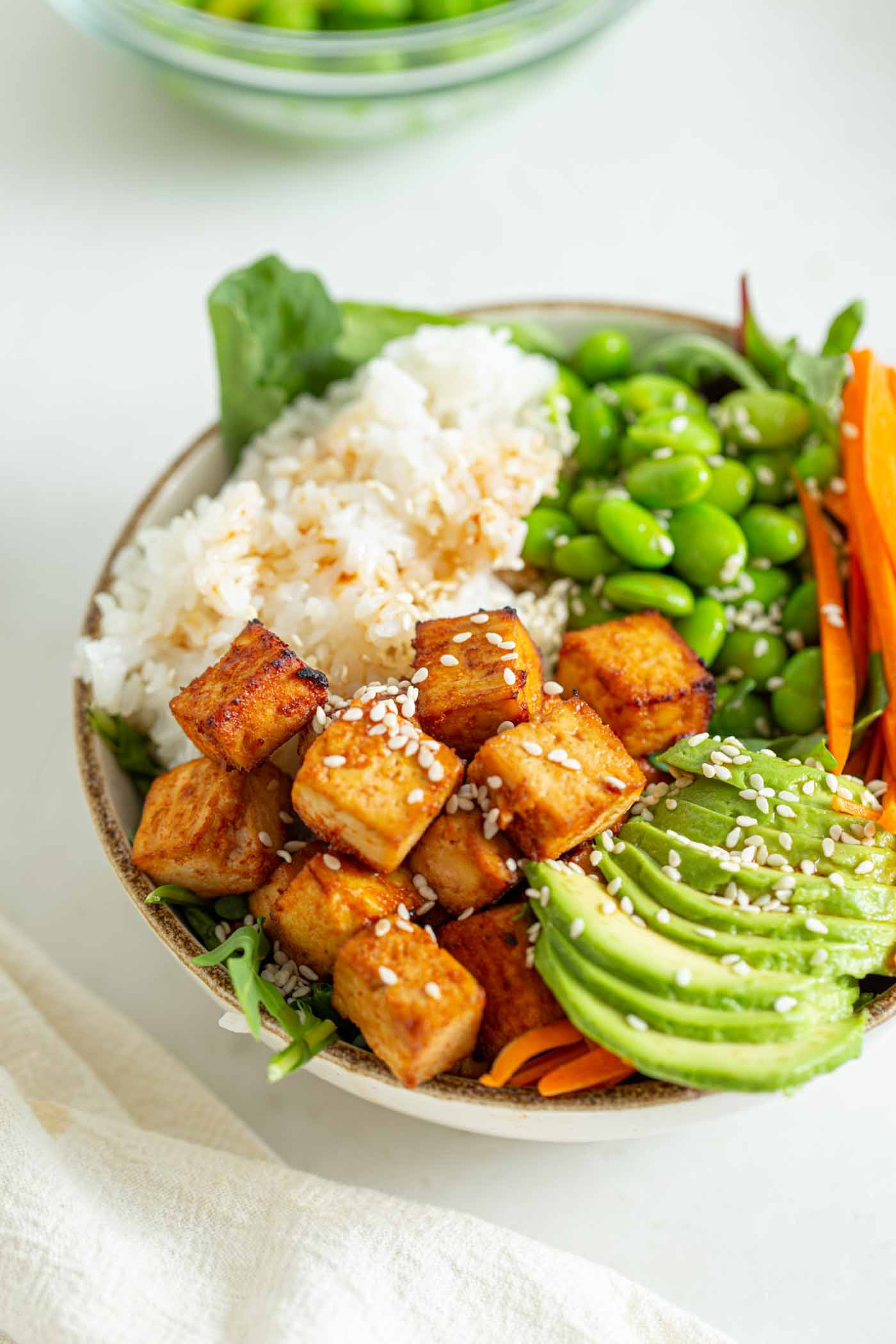
What is Tofu?
Tofu, also known as bean curd, is made from soy or more specifically, from soybean milk. White soybeans are boiled and curdled and the resulting curds are pressed into the white blocks of tofu that we see in stores. Its high protein content makes it a great choice if you eat a plant-based diet.
What does Tofu Taste Like?
Tofu doesn’t taste like much. If anything, it’s ever so slightly “beany” tasting, much like edamame, plain soy milk or soybeans.
Although it’s bland on its own, tofu easily absorbs flavor so it’s best marinated or seasoned to suit whatever dish you’re using it in.
You can make tofu taste like just about anything through various cooking and preparation methods. It’s blandness actually makes it a great choice for baking, dressings and dips to add texture and volume, or even replace ingredients like oil, eggs and dairy.
Tofu Nutritional Benefits
- good source of protein
- contains all essential amino acids, making it a complete protein
- good source of iron, manganese, selenium, magnesium, copper, zinc and vitamin B1
- extra-firm tofu has the highest protein content but also the highest fat content.
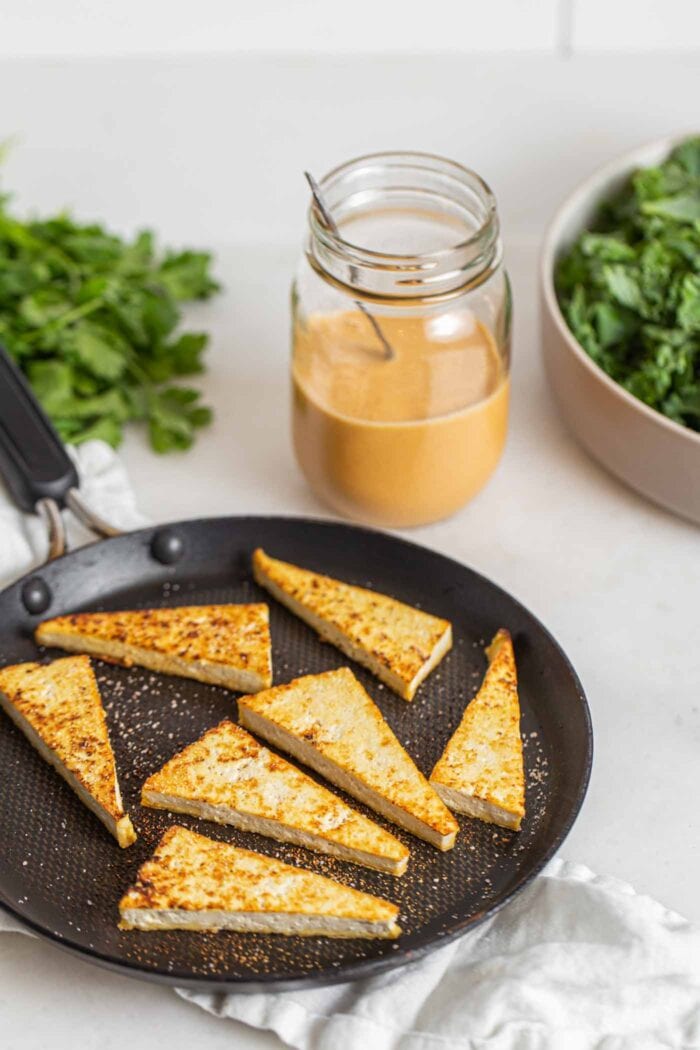
Fermented Soy Products
We’ll get into the different types of tofu below but before we do, let’s take a quick look at two other popular soy products: tempeh and natto.
What is Tempeh?
Tempeh is made from cooked and fermented soybeans that are formed into a patty that’s typically sold in blocks.
Tempeh has it’s own unique, nutty taste, unlike tofu, which doesn’t really have a flavour of its own.
Tempeh is high in protein, calcium and phytochemicals and has a firm texture that’s often used as a substitute for meat. It’s also a great option for including fermented foods in your diet.
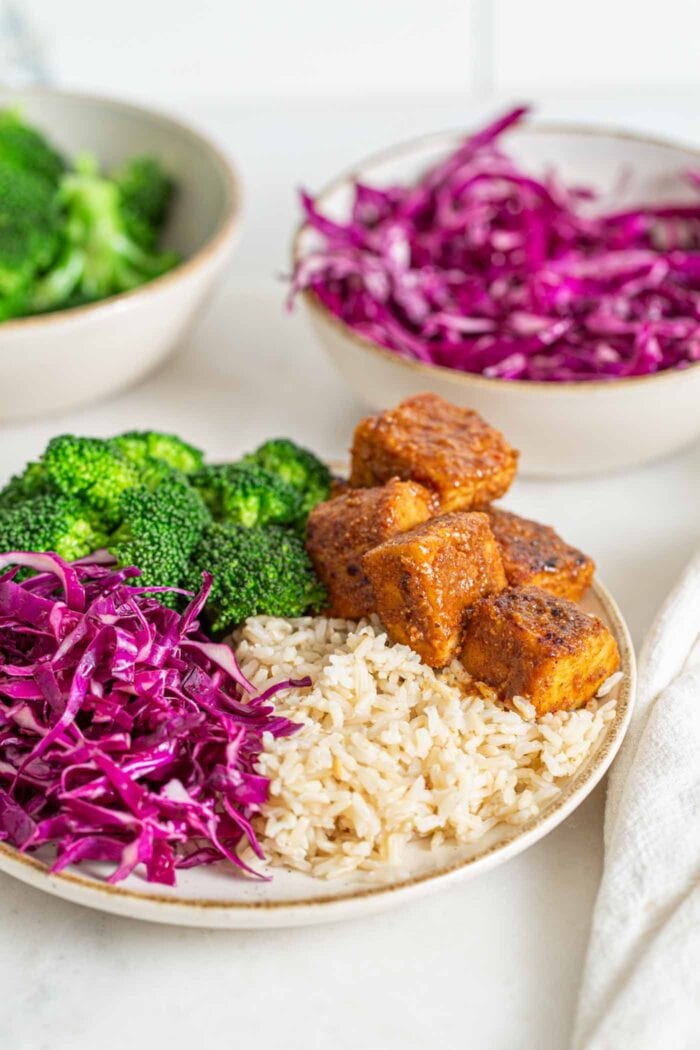
How to Use Tempeh
- cut into slabs or cubes to use in recipes
- crumble into dishes like vegan chili
- cut into small cubes and fry in a pan to add to salads, soups and stir fries
- marinated and bake in slices to make “bacon” – great on sandwiches!
- marinate and bake in cubes to add to salads or bowls or enjoy as a tasty side dish
Tempeh Recipes
- Baked Tempeh Brown Rice Bowls
- Tempeh Buddha Bowl
- Sweet Potato Breakfast Hash
- Tempeh Quinoa Macro Bowl
- Vegan Tempeh Tacos
- Easy Veggie Stir Fry with Tempeh and Rice
- Tempeh Bacon Avocado Breakfast Bowls
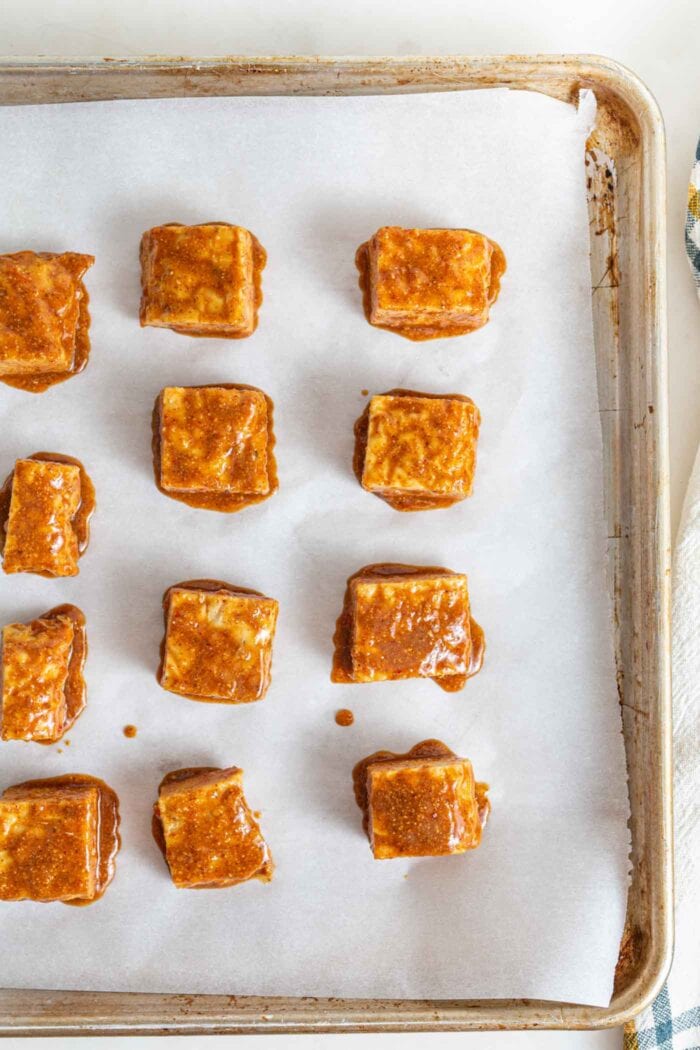
What is Natto?
Natto is one soy product you may not have heard of before. Much like tempeh, natto is fermented with a rich probiotic content, making it good for digestion and gut health.
It’s made from soaking whole soybeans, cooking them and then adding bacteria to the cooked beans so they can ferment. Even more so than tempeh, natto is definitely not for everybody. It has a strong smell and peculiar, gooey, stringy texture. Sounds delicious, doesn’t it?
Natto Nutritional Benefits
- highly nutritious and a very good source of protein, fiber, vitamins and minerals, in particular, calcium which isn’t always the easiest to get if you eat a plant-based diet
- rich in B vitamins, iron, copper, zinc and magnesium
- rich vitamin K content, which is important for a healthy heart as it has been shown to prevent hardening of the arteries. Vitamin K has also been shown to prevent age-related neurological degeneration and prevent kidney stones.

Types of Tofu
There are two main kinds of tofu: silken and regular. They both come in different firmnesses from soft to extra-firm. Silk tofu, or Japanese-style tofu is much softer than regular tofu, so it requires more careful handling.
Regular tofu, or bean curd, is much more common than silken tofu. Regular tofu you is what you’d typically find in the refrigerator or produce section of most grocery stores.
Tofu Firmness
Tofu varieties differ by how much water is pressed out of them. The more water that’s pressed out, the firmer the tofu gets. This is why as the firmness increases, so does the fat and protein content. There’s less water and more actual tofu, even though the size is the same.
For most recipes, you’ll want to use regular tofu in either medium, firm or extra-firm. There isn’t a huge difference between the three but if you want the tofu to retain its shape, firm or extra-firm tofu is best.
You can eat any tofu raw such as in my caesar salad dressing or tofu feta but I usually eat tofu cooked in some way. Crispy baked or dry-fried tofu is my go-to.
Let’s review the different types of tofu available and what their best used for.
Extra-Firm Tofu
- use when you want the tofu to hold its shape
- sturdy and will hold together through differetn cooking methods
- can be sliced, cubed, fried, baked, grilled or crumbled
- extra-firm tofu won’t absorb as much flavour as medium or firm tofu, so it can be helpful to marinate it before preparing.
Firm Tofu
- absorbs flavour well
- can be stir-fried, baked, cubed and just about anything else when you want your tofu to retain its shape
- can be also used for tofu scramble and creating dairy-free versions of certain cheeses such as ricotta
Medium Tofu
- more delicate than firm
- can easily fall apart when handled however it’s still great for stir-fries or marinated tofu recipes when you want the tofu to absorb a lot of flavour
- can be used in soups like miso, served cold and marinated and used in baking
Soft Tofu
- best for blending into baking, smoothies, raw desserts, dips and sauces
- use soft tofu a lot as a replacement for dairy in creamy dressings such as caesar salad dressing
Smoked Tofu
- smoked tofu with a firm, meaty texture and smoky flavour
- use it in sandwiches or anywhere else as an alternative to meat or dairy
- ready to eat right out of the package.
- could make your own smoked tofu if you have a smoker or gas grill
Silken Tofu
- undrained and unpressed tofu and has a higher water content than other tofu varieties
- comes in soft, firm and extra-firm but I haven’t noticed much of a difference between them
- sometimes comes sold in tubes and if you can’t find it in a regular grocery store, it should be available in an Asian food store
- note that silken tofu doesn’t require refrigeration so you may need to ask where it’s kept if you can’t find it.
- best for used in foods like dressings, sauces, smoothies and desserts
- can also be used in baking to replace things like cream, oil or egg
Silken tofu is not curdled like regular tofu making it much more delicate. It’s a little touchy and crumbles easily so be careful when handling it if you’re trying to keep it intact. Otherwise, just toss it into the blender if you’re using it in something like a vegan cheesecake, smoothie or raw dessert.
Other Types of Tofu
In addition to the main types of tofu you’d find in North America, there are a ton of different kinds used in Asian cuisines. I’m not familiar with them though and have no experience cooking with them. This includes processed tofu such as fried, dried, fermented and frozen.
There are also tofu varieties that aren’t made with soybeans. This includes almond tofu, egg tofu, sesame tofu, peanut tofu and even Burmese tofu which is made from chickpea flour.
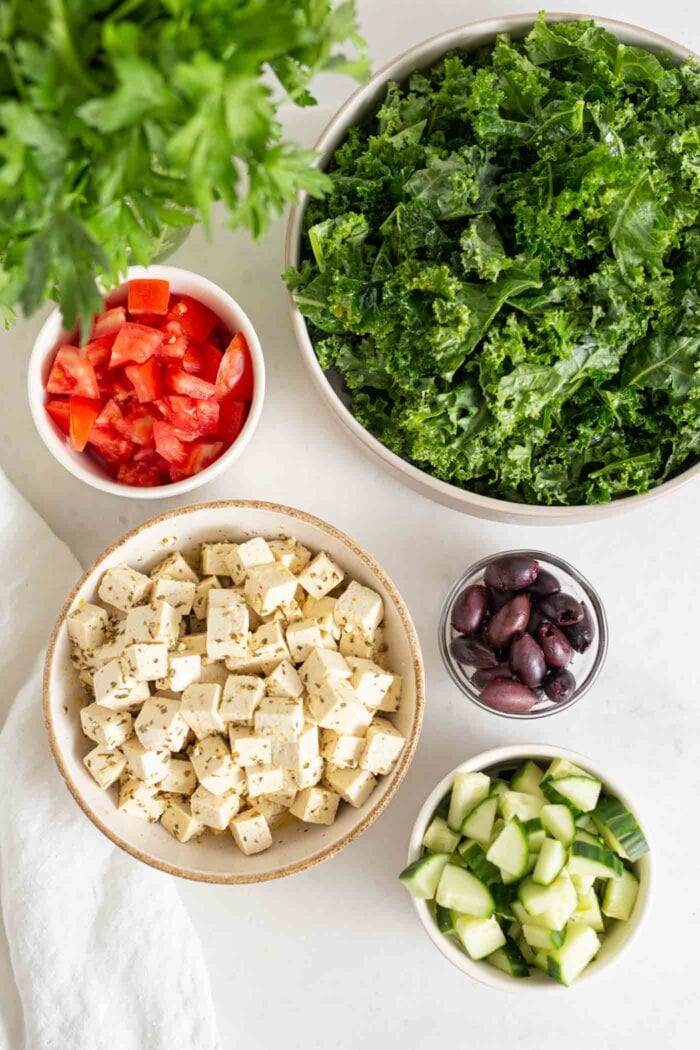
How to Cook Tofu
There are many different ways you can prepare tofu. It can be cooked by itself, added to recipes, used in baking, marinated, fried, baked, blended, breaded and more.
Tofu can be cubed and tossed into soup, it can be breaded and baked, it can be fried and it can even be eaten right out of the package. This is quite common with medium tofu served topped with sauce, as you might find in Japanese cuisine. You can also toss soft and medium tofu right into a smoothie for extra protein and creaminess.
Deep fried or pan-fried tofu will, of course, give you the crispiest texture but oil-coated tofu isn’t something you want to eat on a regular basis. You’ll find tofu prepared this way in restaurants and of course, it’s delicious however when preparing tofu at home, I usually bake it or dry-fry it in a pan.
Tips for Flavor and Crispiness
- Marinate it. For the most flavorful tofu, marinating it first to allow the flavors to absorb is your best bet. Even just a splash of soy sauce or tamarin, garlic powder and pepper work wells for a marinade.
- Press it. Pressing the excess water out of tofu first helps it absorb more flavor and improves the crispiness when baked for fried. You can find instructions on how to press tofu here.
How to Bake Tofu
My favorite way to prepare tofu is baking it.
Simple Baked Tofu
- Preheat the oven to 400 degrees F.
- Cube tofu and place in a bowl with a splash of soy sauce, garlic powder and pepper. Mix to combine so each piece is coated.
- Place on a baking tray.
- Bake for about 20 minutes, flip and continue baking until brown and crispy.
BBQ Baked Tofu
Follow the baking steps above but instead of using soy sauce, pepper and garlic powder, marinate the tofu in BBQ for a couple of hours before baking.
Sesame Baked Tofu
Follow the baking steps above but instead of using soy sauce, pepper, and garlic powder, marinate the tofu in equal parts soy sauce, maple syrup and sesame oil and 1 tsp of garlic powder for a couple of hours before baking.
How to Fry Tofu
Frying tofu is simple. Mix cubed tofu with desired spices then fry in a pan with a bit of coconut or avocado oil. Allow it to sit on each side until browned, then stir and repeat until all sides are crispy and brown.
How to Dry-Fry Tofu (Oil-Free)
Aside from baking, a quick “dry-fry” is my other go-to method for making tofu. To make tofu in a pan without oil, cube tofu and toss with desired spices then add to a hot non-stick pan and “fry” until browned on all sides.
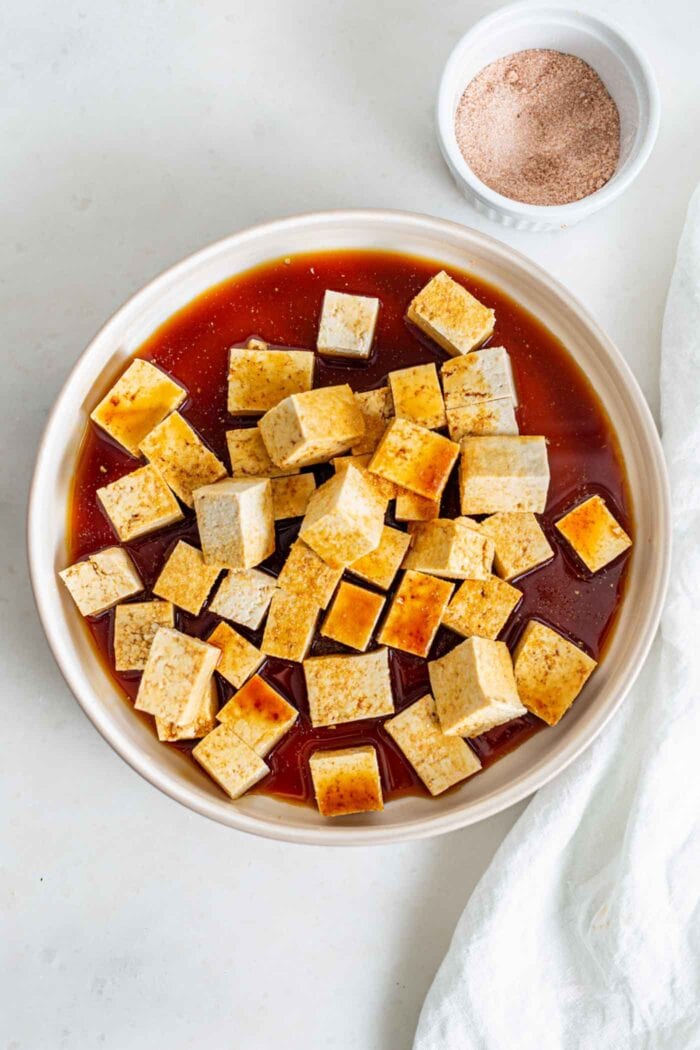
Tofu FAQs
Nope! Tofu can be eaten raw straight from the package, however, it’s most often prepared in a way to improve the flavor and texture.
I use raw tofu often in dressings and sauces or dairy substitutes like this tofu feta or tofu ricotta.
Yes, you can freeze tofu! Frozen tofu can be stored for up to 3 months. Cut it into chunks and freeze on a parchment-lined tray. Once it’s solid, transfer it to a freezer-safe container or bag.
Frozen tofu can be defrosted in the fridge. Freezing tofu does change the texture slightly but I don’t notice too big of a difference.
No, you don’t have to but it does lent to better result if you’re looking for crisp, flavourful tofu if you’re baking or frying it. I often forget and want to get started cooking right away so I skip press.
Pressing it is really easy though and if you have the time, I’d definitely recommend adding this step to the process when preparing firm, extra-firm and medium tofu. You wouldn’t want to press soft or silken tofu as it would just be smushed.
To press tofu, wrap it in a dish towel and place on a plate. Place a heavy object such as a heavy pan or cookbook on top of it. Let it sit for 20-30 minutes. Use as normal.
You can learn more about pressing tofu here.
Store unopened tofu in the refrigerator until ready to use. Place the leftover tofu in a sealed container covered with water. You can change the water daily to keep the tofu as fresh as possible though it’s not a big deal if you miss a few days.
Packaged tofu has quite a long expiry date when unopened so just check the package for the best before date. Once you’ve opened the package, you can store any leftover tofu in the fridge for up to 1 week.
Plain tofu is naturally gluten-free. It contains soybeans, water and a curdling agent, all of which are gluten-free. If you’re purchasing a flavoured, breaded or otherwise prepared tofu, check the package for gluten-containing ingredients.
Personally, I always buy organic tofu. It’s just one of those foods I feel more comfortable eating organic and fortunately organic tofu is about the same price as it’s non-organic counterparts.
Yes, since tofu is made without the use of any animal products, it is considered vegan. I eat organic tofu and tempeh regularly as a source of protein in my plant-based diet.
For more information on vegan nutrition, you can read my vegan nutrition guide and guide to vegan proteins. If you’re interested in learning more about a plant-based diet, I’d suggest reading my tips for plant-based beginners and post about how to transition to a plant-based diet.
Most tofu found in stores is non-GMO. We hear a lot about genetically modified soy and yes, upwards of 90% of soy crops are GMO but most of it is the soy used for animal feed.
If you’re concerned, look for tofu with a non-GMO certified label. Any tofu I’ve ever bought has the non-GMO label on it. It’s not hard to find.
Sprouted tofu is made from sprouted soybeans making it easier to digest. I buy sprouted tofu when I can find it.
Other than digestibility and a slight difference in nutrition, it’s the same as regular tofu as far as cooking and preparation methods.
I’ve never made tofu but you can make your own tofu at home with tofu and a coagulant. Check out this detailed tutorial for how to make tofu from Cultures for Health.
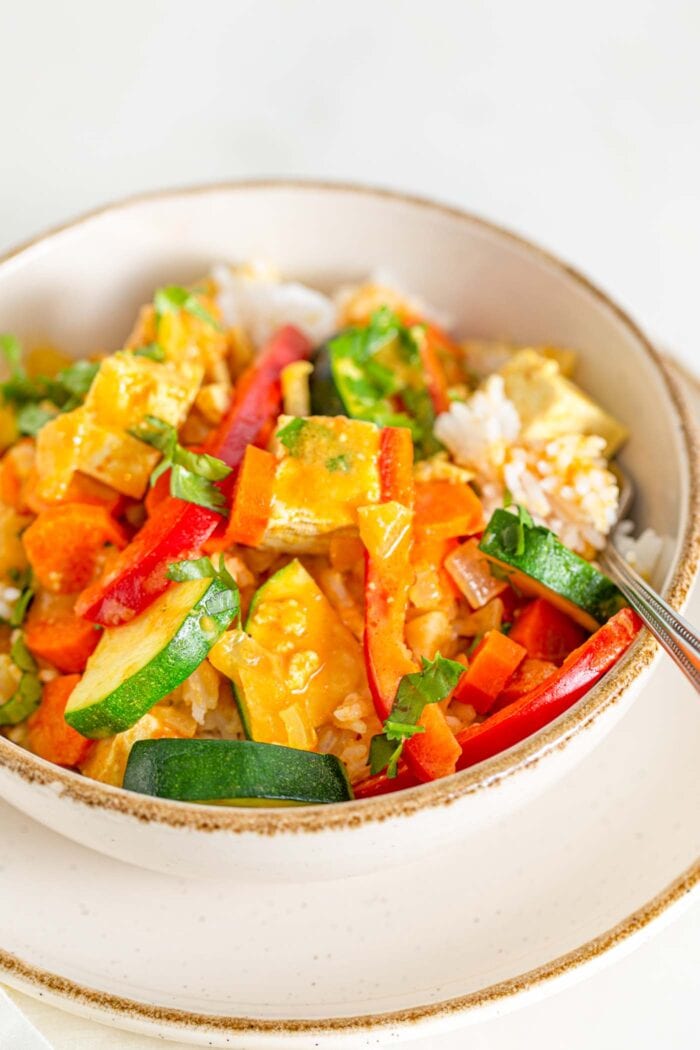
Tofu Recipes
Raw Tofu Recipes
- Tofu Feta Cubes
- Crumbled Tofu Feta
- Creamy Basil Dressing
- Caesar Salad Dressing
- Tofu Ranch Dressing
- Vegan Tofu Ricotta
Baked Tofu Recipes
- Sriracha Baked Tofu Brown Rice Bowls
- Crispy Baked Garlic Black Pepper Tofu
- Crispy Baked Curried Tofu (Oil-Free)
- Easy Vegan Spaghetti Squash Noodles
- Coconut Cauliflower Rice Buddha Bowl with Tofu
- Vegan Sweet Potato Tofu Bowls
- Vegan BBQ Tofu Bowls
- Sesame Tofu Lettuce Wraps
- Easy Vegan Spaghetti Squash Noodles
- Tofu Kale Salad with Coconut Peanut Dressing
- Vegan Buddha Bowl with Tofu and Edamame
- Vegan Thai Chopped Salad with Peanut Sauce and Tofu
Breakfast Tofu Recipes
- Vegan Sweet Potato Breakfast Burritos
- Vegan Breakfast Burrito Bowl
- Healthy Vegan Breakfast Burritos
- How to Make Tofu Scramble

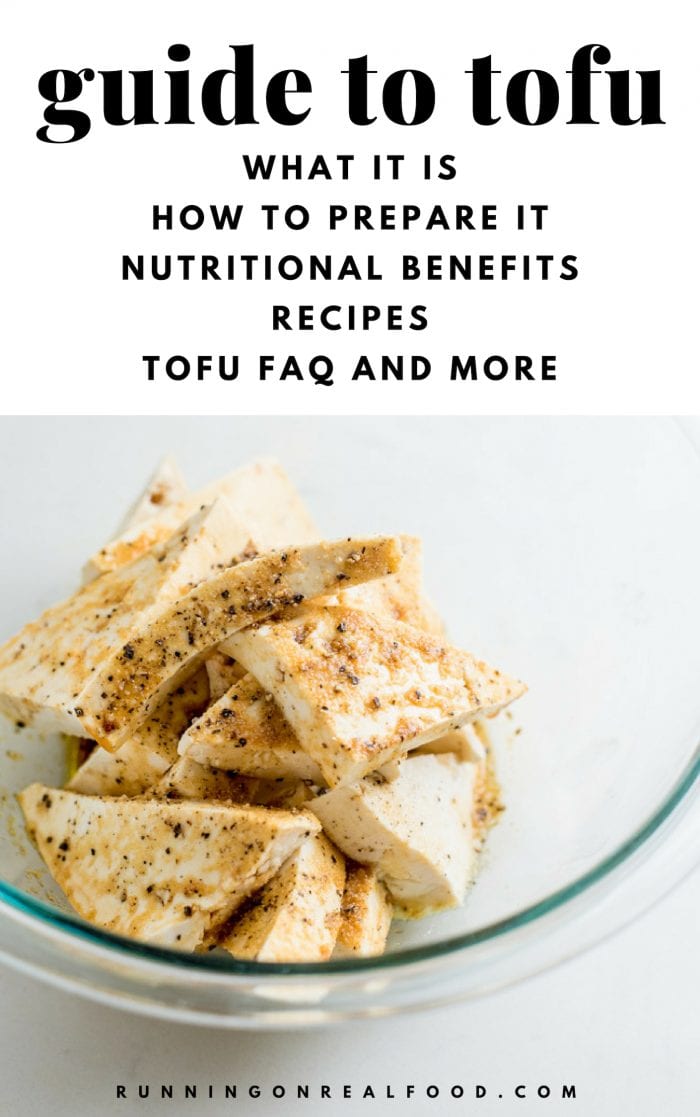

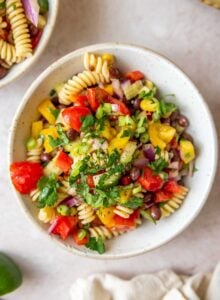
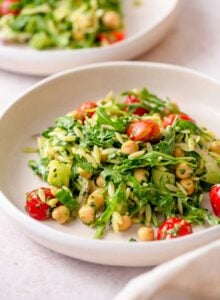
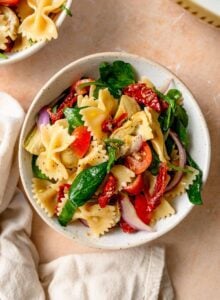
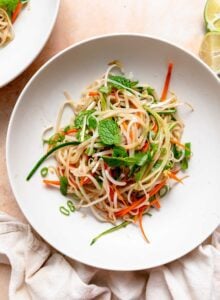
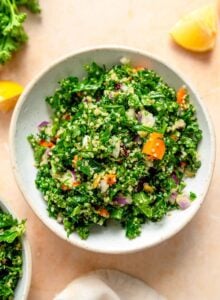
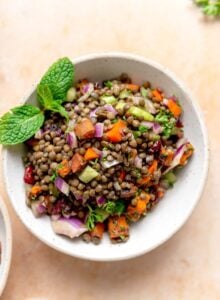
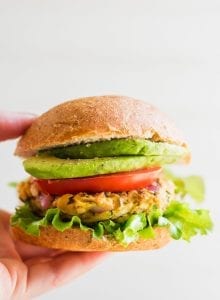

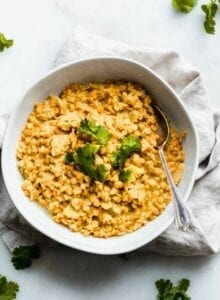
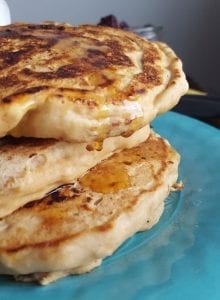


How do I store tofu that is seasoned and baked in oven??
Let it cool then store it in the fridge in a sealed container for up to 4 days. You can reheat it in the microwave or for a crispier effect, in the oven or a pan on the stovetop.
Very helpful! We try to do at least 2 meatless days per week, so this is great inspiration for night!
You’re welcome. Happy Meatless Meals!
Firm Tofu all the way. I used it a lot when I transitioned from a meat to vegetarian diet and helped a lot. Great guide.
Thank you for the guide! I have eaten very little tofu so far. Mostly, because I never took the time to understand how to use it. I will save this post for reference and will try to introduce tofu in my diet again.
Glad you found it helpful, Rachel! 🙂